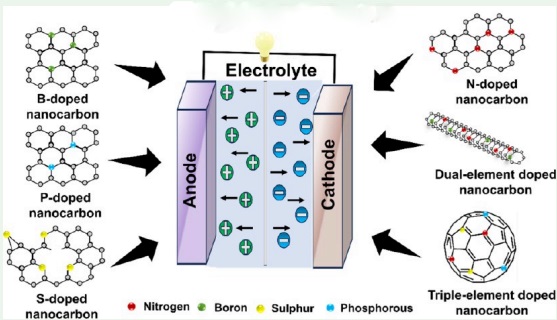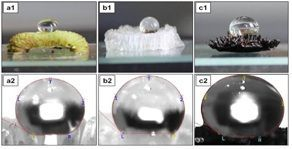Our Research
Our Research interests are as follows:

Metal - CO2 Batteries
We have demonstrated for the first time a working prototype of Li-CO2 battery technology operated at simulated Martian gases atmosphere to explore the feasibility of this technology in the Mars mission, particularly with respect to surface landers and rovers. The development of Li-CO2-Mars batteries can also be justified in terms of significant savings on mass, volume, and more importantly increase in energy density, which is very essential in the Mars Lander and Rover missions. Further, the batteries developed from the proposed work can be applied in energy conversion and storage systems, as it offers higher energy density than the currently used lithium-ion batteries and conventional Li-CO2 battery and at the same time, provides a striking option to fix CO2 emissions and environmental protection

DFT for Advanced Material Studies
Density Functional Theory (DFT) is a powerful computational tool, allowing us to investigate electronic structure of materials at atomic level. We validate the experimental results at the CARBON lab using theory for energy storage and sensing technologies. This theoretical method complements our experimental efforts by providing deep insights into the properties and behaviors of materials under different conditions. In gas sensing, DFT helps us understand how gas molecules interact with sensor surfaces, enabling us to design more sensitive & selective sensors. In supercapacitors, DFT is utlilized to investigate the charge storage mechanisms and identify materials with high capacitance and stability. Similarly, for batteries, DFT aids in identifying electrode materials that offer improved performance, energy density, and stability.

High Energy & High Power Devices
In our lab, we specialize in developing carbon-based electrode materials for advanced energy storage systems (Supercapacitors, Lithium-Ion Capacitors, & Dual-Carbon Batteries). Our research focuses on enhancing the electrochemical performance of these technologies. Through the functionalizing of carbon materials, we significantly improved the energy density of supercapacitors & lithium-ion capacitors. We also focus on creating sustainable, cost-effective dual-carbon batteries with exceptional cycling stability. Our mission is to drive innovation in energy storage by utilizing carbon materials to deliver efficient, reliable, & environment friendly technologies.

Carbon based hierarchical structures
We synthesize a variety of carbon micro- and nano- structures using sol-gel emulsion, electrospinning, pyrolysis and chemical vapor deposition technique. A large number of polymer precursors such as photoresists, organic gels, and polymers are employed to yield carbon structures. Polymer structures and thin films are patterned and miniaturized to fabricate three dimensional carbon surfaces upon pyrolysis. Our group is engaged in using these hierarchical carbon structures and surfaces for various applications notably as anode materials for Lithium ion battery, biosensors and water and air purification.

Electrospun nanofibers
Electrospinning is a technique to fabricate nanofibers by applying high voltage to a polymer solution. We work with different polymers (PES, PAN, PMMA, Cellulose) and Block co-polymers (PS-b-PMMA) to obtain the electrospun nanofibers. These electrospun nanofibers are then functionalized to provide additional features such as porosity, core and shell morphology, hollow fibers, alignment, pyrolysis to yield carbon nanofibers for specific applications. Some of these applications being pursued in our group include using them as electrode material for energy storage devices, biosensors, environmental pollution control and health related issues.

Nature-inspired Functional Surfaces
Nature inspires us to solve our complex problems in many different ways, may it be birds flying, or cactus surviving in the desert. In our group we focus on structural functionalities as provided by Nature such as self-cleaning, superhydrophobicity and optical activity. We either replicate (biomimicking) the hierarchical structural patterns by soft lithography or fabricate them (bio-inspiration) using variety of micro- and nano-fabrication tools. While superhydrophobic polymer & carbon surfaces may be used in microfluidics, filtration & textile applications, optically active surfaces may find potential applications in solar cells, light sensitive detectors & displays.